In this blog post guide, we will about the advanced reproductive technology known as Controlled Internal Drug Release (CIDR) and its application in the bovine industry.
It explores the scientific principles of CIDR inserts, their benefits over traditional methods, and how they can be strategically implemented to enhance fertility rates and overall herd health.
The article also discusses the economic implications of incorporating CIDR into livestock management, ensuring a comprehensive understanding of its impact on both the animals and the agricultural business.
Key Takeaways
- CIDR technology represents a significant advancement in bovine reproduction, offering precise control over estrous cycles and improving breeding efficiency.
- Strategic use of CIDR inserts in conjunction with artificial insemination protocols can lead to notable improvements in conception rates and reproductive cycle management.
- Empirical data and case studies demonstrate that CIDR can yield positive outcomes in fertility across various herd sizes, with long-term benefits to herd reproductive health.
- While CIDR technology enhances reproductive management, it is crucial to prioritize animal welfare, addressing health risks and ethical considerations associated with its use.
- Economic analysis reveals that CIDR implementation, when managed effectively, can provide a favorable return on investment, making it a viable option for budget-conscious agricultural operations.
Understanding CIDR Technology in Bovine Reproduction

The Science Behind CIDR Inserts
Controlled Internal Drug Release (CIDR) inserts are a cornerstone technology in modern bovine reproduction. These devices are impregnated with the hormone progesterone, which is essential for regulating the estrous cycle in cows and heifers.
CIDR inserts provide a consistent and controlled release of progesterone, ensuring that animals are at the optimal reproductive state at the time of insemination.
The use of CIDR is based on the principle of synchronizing the estrous cycles of a herd, which allows for timed artificial insemination (AI). This synchronization is achieved through the following steps:
- Insertion of the CIDR device into the vagina of the cow or heifer.
- The device releases progesterone over a set period, typically 7 days.
- Removal of the CIDR insert, which causes a rapid decline in progesterone levels.
- Administration of an estrus-inducing agent to stimulate ovulation.
By controlling the timing of ovulation, CIDR technology not only improves the efficiency of AI but also enhances the potential for successful conception. This methodical approach to breeding is a significant advancement over traditional, observation-based estrus detection.
Benefits of Controlled Internal Drug Release
The use of Controlled Internal Drug Release (CIDR) inserts in bovine reproduction offers a multitude of benefits that enhance the overall efficiency of breeding programs. CIDR technology allows for precise synchronization of estrus cycles across a herd, which is pivotal for timed artificial insemination protocols.
One of the primary advantages of CIDR is the improvement in conception rates. By ensuring that all cows and heifers are at the same stage of their estrus cycle, the likelihood of successful insemination increases significantly.
This synchronization leads to a more uniform calving season, which simplifies herd management and can improve calf health outcomes. The benefits of CIDR extend beyond just reproductive efficiency. Here’s a list of additional advantages:
- Improved labor management due to predictable breeding and calving times
- Reduced need for estrus detection, saving time and resources
- Enhanced genetic progress by facilitating the use of superior sires
- Decreased stress on animals by minimizing the handling required for heat detection
Comparing CIDR to Other Synchronization Methods
When evaluating the effectiveness of CIDR (Controlled Internal Drug Release) inserts in bovine reproduction, it is essential to compare them to other estrous synchronization methods.
CIDR offers a distinct advantage in its ability to precisely control the release of progesterone, which is crucial for synchronizing estrus in cattle. Other methods, such as the use of prostaglandins or GnRH, rely on the natural cycle of the animal and can be less predictable.
A study titled Evaluation of two beef cow fixed-time AI protocols highlighted the comparison of FTAI (Fixed-Time Artificial Insemination) results using different presynchronization approaches, including CIDR.
| Method | Predictability | Hormone Control | Ease of Use |
|---|---|---|---|
| CIDR | High | Direct | Moderate |
| GnRH | Moderate | Indirect | High |
| PGF2α | Low | None | High |
The table above succinctly summarizes the key differences between CIDR and other common synchronization methods. CIDR’s methodical hormone control is a significant factor in its widespread adoption in reproductive management programs.
Strategic Implementation of CIDR in Breeding Programs
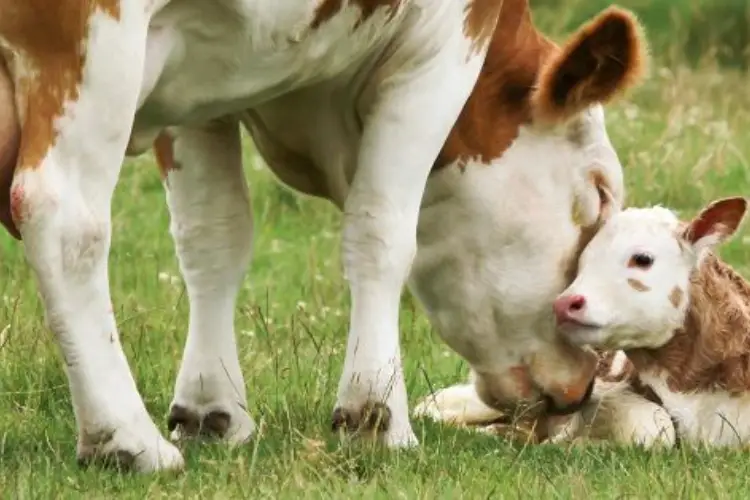
Timing and Protocols for CIDR Insertion
The strategic timing of CIDR insertion is crucial for optimizing the synchronization of estrus in cows and heifers. Proper scheduling ensures that the animals are at the optimal stage of their reproductive cycle for artificial insemination (AI).
A common protocol involves the insertion of the CIDR device followed by an injection of Gonadotropin-releasing hormone (GnRH) to induce ovulation.
After the initial treatment, prostaglandin is administered 6 or 7 days later to regress any corpus luteum that may be present, which is a key step in synchronizing the estrus cycle. A second injection of GnRH is typically given approximately 48 hours after the prostaglandin to trigger ovulation of the new follicle.
This sequence is designed to prepare the cows for AI at a predictable time, enhancing the chances of successful conception.
The following table outlines a basic CIDR protocol for estrus synchronization:
| Day | Action |
|---|---|
| 0 | CIDR Insertion & GnRH Injection |
| 6-7 | Prostaglandin Injection |
| 8-9 | CIDR Removal & Second GnRH Injection |
| 10 | AI Procedure |
Adherence to these protocols is essential for achieving the desired outcomes in reproductive efficiency. It is important to note that variations may exist depending on specific herd requirements and the advice of a veterinary professional should always be sought.
Integrating CIDR with Artificial Insemination
The integration of Controlled Internal Drug Release (CIDR) devices with artificial insemination (AI) represents a significant advancement in bovine reproductive management.
The precise control of estrous cycles through CIDR allows for more efficient AI scheduling, ensuring that insemination occurs at the optimal time for conception.
When CIDR inserts are used in conjunction with AI, it is crucial to consider both endogenous and exogenous factors that can influence the success of the breeding program. Proper timing of CIDR removal and AI is essential to coincide with the peak fertility period of the cow or heifer.
Additionally, the condition of the used CIDR-G devices and their correct application play a pivotal role in achieving estrous synchronization.
To illustrate the process, here is a simplified timeline for integrating CIDR and AI:
- Day 0: Insert CIDR device.
- Day 7: Remove CIDR and administer prostaglandin F2α.
- Day 9: Observe for signs of estrus.
- Day 10: Perform AI following detected estrus.
Monitoring and Managing Reproductive Cycles
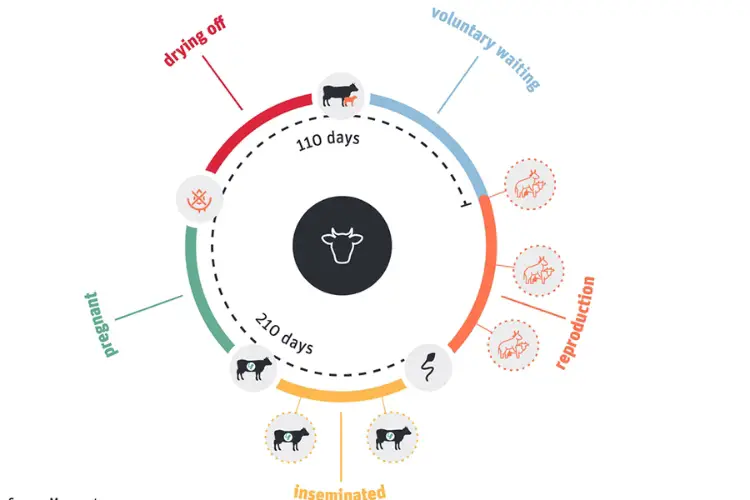
Effective monitoring and managing of reproductive cycles are crucial for the success of breeding programs that incorporate CIDR (Controlled Internal Drug Release) technology. Regular observation and record-keeping are essential to ensure that the CIDR inserts are functioning as intended.
Farmers and veterinarians must track the onset of estrus and confirm that the timing aligns with the CIDR protocol. To optimize the use of CIDR inserts, it is important to understand the factors that can influence breeding success.
For instance, the initiation of estrous cycles with CIDR can lead to a shorter anestrous postpartum period, which is beneficial for increasing the number of cycles within a breeding season. This is particularly significant in managing the fertility of cows and heifers.
The following table outlines key indicators to monitor during the CIDR protocol:
| Indicator | Description | Frequency of Monitoring |
|---|---|---|
| Estrus Onset | Observation of behavioral signs of heat | Daily |
| Insert Integrity | Checking for proper placement and condition of CIDR | At insertion and removal |
| Post-Insemination Signs | Monitoring for signs of conception or return to estrus | As per AI schedule |
By diligently tracking these indicators, producers can make informed decisions about the timing of artificial insemination and the overall management of the breeding program.
Analyzing the Impact of CIDR on Fertility Rates

Statistical Improvements in Conception Rates
The introduction of Controlled Internal Drug Release (CIDR) technology has marked a significant milestone in the field of bovine reproduction. Statistical analysis reveals a notable increase in conception rates when CIDR inserts are utilized in synchronization protocols.
This improvement is attributed to the precise regulation of hormonal cycles, which enhances the timing of ovulation and increases the likelihood of successful insemination.
One of the key metrics in evaluating the efficacy of reproductive technologies is the conception rate, which directly impacts the productivity of a herd. The table below summarizes the conception rate improvements observed in various studies:
| Study | Without CIDR (%) | With CIDR (%) | Improvement (%) |
|---|---|---|---|
| A | 40 | 55 | 15 |
| B | 45 | 60 | 15 |
| C | 50 | 65 | 15 |
These figures underscore the potential of CIDR to enhance reproductive outcomes. It is important to note, however, that while the data is promising, the actual results can vary based on herd management practices, genetic factors, and environmental conditions.
Case Studies: Success Stories in Different Herd Sizes
The application of CIDR technology has been documented across various herd sizes, showcasing its adaptability and effectiveness in enhancing fertility rates.
Small-scale operations have reported significant improvements, with one family-owned farm increasing its conception rate by 20% within the first breeding season after CIDR implementation.
In contrast, larger herds have seen a more nuanced impact. A study involving a commercial ranch with over 1,000 head of cattle demonstrated a 15% rise in successful pregnancies. This was attributed to the synchronization of estrous cycles, allowing for more timely and efficient artificial insemination.
| Herd Size | Conception Rate Increase |
|---|---|
| Small | 20% |
| Large | 15% |
These case studies underscore the potential of CIDR to address the challenge of embryonic loss, which is a significant concern for cow/calf producers. By improving reproductive management, CIDR inserts contribute to the overall economic stability of livestock operations.
Long-Term Effects on Herd Reproductive Health

The introduction of CIDR (Controlled Internal Drug Release) technology in herd management has shown promising results not only in the short term but also in the long-term reproductive health of cattle. Long-term use of CIDR inserts has been associated with improved hormonal profiles in cows and heifers, which is crucial for sustained fertility.
For instance, studies have indicated that repeated estrus synchronization treatment can elevate estrogen levels and increase progesterone (P4) upon CIDR insertion, leading to more predictable and efficient breeding cycles.
Moreover, the longevity of reproductive viability in herds using CIDR has been a focal point of research.
While some concerns have been raised about the potential for raised PMSG antibody levels, which could affect future reproductive performance, the overall consensus is that CIDR use, when managed correctly, supports a healthy and productive breeding program. The table below summarizes key hormonal changes observed with CIDR use over time:
| Hormone | Change after CIDR Insertion | Change after CIDR Removal |
|---|---|---|
| Estrogen (E2) | – | Elevated at 36, 48, 72 h |
| Progesterone (P4) | Increased | – |
| PMSG Antibodies | – | Raised at 24, 48 h |
It is essential for producers to monitor these hormonal shifts to ensure that the benefits of CIDR are maximized without compromising the health and welfare of the animals.
Managing Health and Welfare with CIDR Inserts
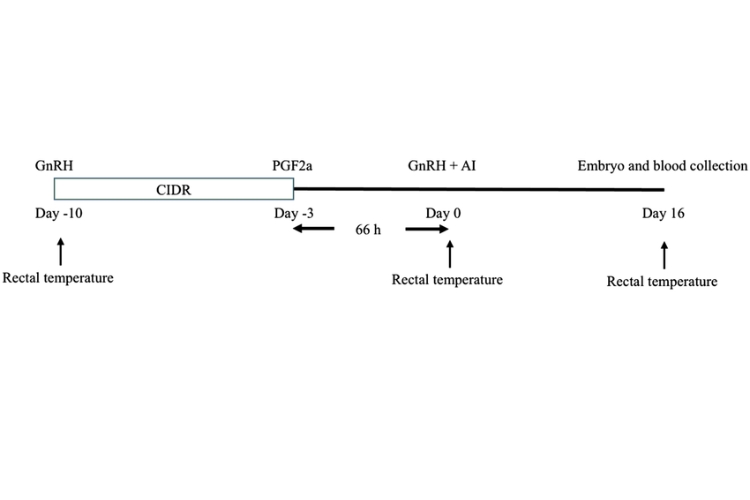
Ensuring Animal Safety During CIDR Use
The safety of animals is paramount when incorporating CIDR (Controlled Internal Drug Release) devices in bovine reproductive management. Proper handling and insertion techniques are critical to prevent injury and ensure the welfare of cows and heifers. It is essential to follow a set of best practices:
- Training staff on the correct procedures for CIDR insertion and removal.
- Using sanitized equipment to prevent infections.
- Conducting regular health checks post-insertion to monitor for adverse reactions.
Additionally, understanding the hormonal effects of CIDR is important for animal safety. Inducing luteolysis prior to atresia of the first follicular wave is a delicate process that must be managed carefully to avoid disrupting the animal’s natural reproductive cycle. The use of CIDR should be part of a well-planned breeding program, taking into account the timing of estrous cycles and the overall health status of the herd.
Addressing Potential Health Complications
While CIDR inserts are generally safe for use in cattle, it is crucial to be vigilant about potential health complications that may arise. Proper insertion and removal techniques are essential to minimize risks such as local infections or tissue irritation.
Veterinarians and herd managers should be trained to recognize signs of distress or adverse reactions in animals. The use of CIDR inserts involves the administration of hormones, such as gonadotropin-releasing hormone, which must be managed carefully to avoid disrupting the animals’ natural hormonal balance.
It is important to follow the recommended protocols and dosage instructions to ensure animal welfare and prevent any negative impact on fertility. To facilitate a clear understanding of health complications, the following table summarizes common issues and recommended preventative measures:
| Complication | Prevention Strategy |
|---|---|
| Infection | Aseptic insertion techniques |
| Tissue irritation | Proper training in insert placement |
| Hormonal imbalance | Adherence to protocols |
By addressing these potential health complications proactively, farmers can maintain the integrity of their breeding programs while ensuring the health and welfare of their cattle.
Ethical Considerations in Reproductive Management
The ethical implications of using CIDR (Controlled Internal Drug Release) inserts in bovine reproduction are multifaceted and warrant careful consideration. Animal welfare is at the forefront of ethical discussions, with the imperative to minimize stress and discomfort to cows and heifers during the insertion and removal of CIDR devices.
The use of reproductive technologies, such as CIDR, raises questions about the naturalness of breeding programs and the extent to which human intervention is justified.
It is essential to balance the efficiency gains against potential ethical concerns, ensuring that the pursuit of increased productivity does not compromise the well-being of the animals.
Key ethical considerations include:
- The necessity of CIDR use in relation to animal health and welfare
- Transparency with consumers regarding the use of reproductive technologies
- The responsibility of farmers and veterinarians to use CIDR judiciously and with respect for the animals involved
Stakeholders in the livestock industry must engage in ongoing dialogue to establish guidelines that uphold ethical standards while allowing for advancements in reproductive management.
Economic Considerations of CIDR in Livestock Management
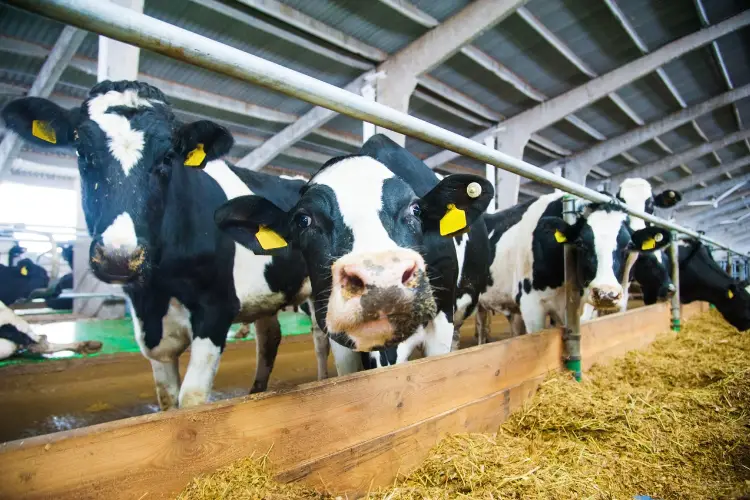
Cost-Benefit Analysis of CIDR Implementation
The introduction of Controlled Internal Drug Release (CIDR) technology in bovine reproduction has been a game-changer for many livestock managers. The economic viability of CIDR inserts hinges on their ability to enhance reproductive efficiency while minimizing labor and resource expenditure.
A detailed cost-benefit analysis is essential to determine the true value derived from CIDR use. When assessing the costs, one must consider the price of the CIDR inserts themselves, additional veterinary expenses, and the potential need for increased labor.
On the benefit side, the primary gains are seen in the form of improved conception rates, reduced time to pregnancy, and a more synchronized calving season. To illustrate, here is a simplified breakdown:
| Expense Category | Average Cost (USD) |
|---|---|
| CIDR Inserts | $9 – $12 per unit |
| Veterinary Fees | $5 – $10 per head |
| Labor | Variable |
| Benefit Category | Estimated Value (USD) |
|---|---|
| Increased Conception Rate | $20 – $40 per head |
| Shorter Time to Pregnancy | $15 – $30 per head |
| Synchronized Calving | Priceless for management |
It is clear that while the upfront costs may seem significant, the long-term benefits can outweigh these expenses, leading to a more profitable operation. However, it is crucial to tailor the analysis to the specific context of each farm, as factors such as herd size and existing management practices can greatly influence the outcome.
Maximizing Return on Investment with CIDR
To maximize the return on investment (ROI) with Controlled Internal Drug Release (CIDR), it is crucial to understand both the costs involved and the potential increase in revenue due to improved fertility rates. Proper management and strategic use of CIDR can lead to significant economic benefits for livestock operations.
When considering the costs, one must account for the price of the CIDR inserts themselves, the labor for insertion and removal, and any associated veterinary expenses. On the revenue side, the primary benefit comes from a higher number of successful pregnancies and subsequent calf crop.
A recent study provided evidence that the return of genetic investment in dairy buffalo would be feasible, with an impressive Internal Rate of Return (IRR) of 19.71%.
To illustrate the financial implications, here is a simplified table comparing the costs and benefits:
| Expense Category | Cost (per animal) |
|---|---|
| CIDR Insert | $9 |
| Labor | $5 |
| Veterinary Fees | $3 |
| Total Cost | $17 |
| Revenue Increase | Benefit (per animal) |
|---|---|
| Higher Pregnancy Rate | $75 |
| Increased Calf Crop | $100 |
| Total Benefit | $175 |
The table demonstrates that the benefits can outweigh the costs, leading to a positive ROI. However, it is essential to tailor the use of CIDR to the specific needs of the herd to ensure the best financial outcome.
Budgeting for Reproductive Technologies in Agriculture
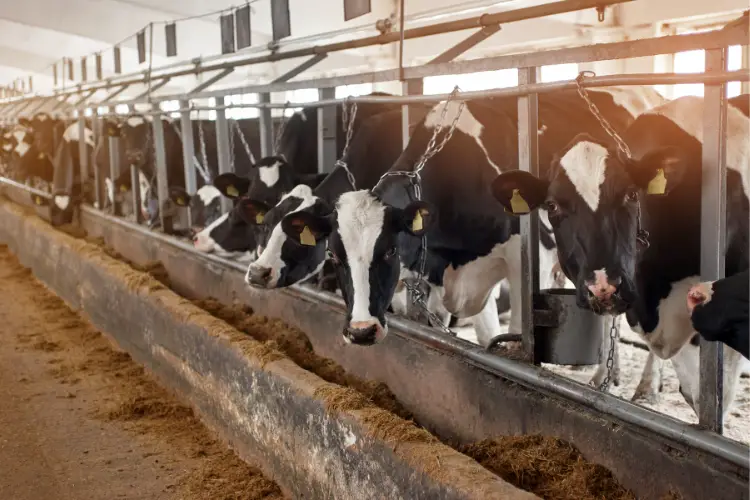
When integrating CIDR technology into a livestock management program, it is crucial to develop a comprehensive budget that accounts for both the initial investment and ongoing costs. Proper budgeting ensures the sustainability of reproductive technologies within the agricultural operation.
The budget should include the cost of the CIDR inserts themselves, associated veterinary expenses, and any additional labor required for the insertion and removal process. It is also important to consider the potential increase in revenue from improved conception rates and the more efficient use of genetics within the herd.
To illustrate the financial considerations, here is an example of a budget breakdown:
| Item | Initial Cost | Recurring Cost |
|---|---|---|
| CIDR Inserts | $X per head | $Y per head/year |
| Veterinary Services | $Z per service | – |
| Labor | $A per hour | $B per hour/year |
By carefully planning and allocating resources, farmers can make informed decisions that balance the costs and benefits of using CIDR and other reproductive technologies.
Conclusion
In summary, the strategic use of CIDR (Controlled Internal Drug Release) inserts in cows and heifers represents a significant advancement in reproductive management.
By synchronizing estrus and improving the timing of artificial insemination, producers can enhance reproductive efficiency, leading to more predictable calving intervals and potentially increased profitability. While the benefits are clear, it is essential for farmers to work closely with veterinarians to tailor protocols to their specific herd needs and to monitor for any potential complications.
As the agricultural industry continues to evolve, embracing technologies like CIDR inserts will be crucial for maintaining a competitive edge in the market and ensuring the sustainability of livestock operations.
FAQs:
What is a CIDR insert and how does it work in cows?
A CIDR (Controlled Internal Drug Release) insert is a device used in bovine reproduction that releases hormones to synchronize the estrous cycles of cows and heifers. It is inserted into the vagina and releases progesterone, which helps to regulate the timing of ovulation for more efficient breeding.
What are the main benefits of using CIDR in cattle breeding?
The primary benefits of using CIDR inserts include improved synchronization of estrous cycles, higher conception rates, better scheduling of artificial insemination, and overall increased reproductive efficiency in the herd.
How does CIDR compare to other estrous synchronization methods?
CIDR is often preferred for its ease of use, effectiveness in synchronizing estrous cycles, and its ability to be used in conjunction with other reproductive technologies. It has a more precise control over hormone release compared to other methods, which can lead to improved breeding outcomes.
When is the best time to insert a CIDR for optimal breeding results?
The timing for CIDR insertion typically depends on the specific breeding protocol being followed. Generally, it is inserted about a week before the planned breeding date and remains in place for 7 days to synchronize the cow’s cycle to the desired timeframe.
Are there any health risks associated with using CIDR inserts in cows?
While CIDR is generally safe for use in cows, potential health risks include vaginal irritation or infection, and improper insertion or removal can cause injury. It is important to follow proper protocols and consult with a veterinarian to minimize risks.
How cost-effective is the use of CIDR in cattle management?
The cost-effectiveness of CIDR depends on various factors, including herd size, existing reproductive efficiency, and management goals. A cost-benefit analysis can help determine the potential return on investment, but many producers find that the improved conception rates and better-calibrated breeding programs justify the initial costs.


